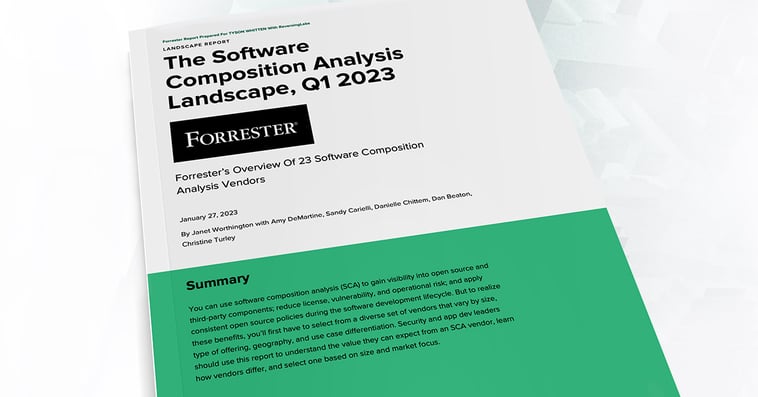What is software composition analysis (SCA)?
Software composition analysis (SCA) — Assists information technology and software development teams by monitoring open-source components and identifying vulnerabilities and licensing compliance to enforce compliance and supply chain security best practices.
Why SCA is important
According to GitHub, 97% of applications and 90% of companies use open source code.1 Additionally, according to AquaSec, software supply chain attacks, which exploit open-source components, increased by over 300% in 2021.2
Malicious actors exploit open-source components because teams must manage large attack surfaces that are constantly changing, and they often have inadequate security measures and tools in place to protect themselves and their components.
For example, in 2022, attackers inserted malicious code into over 35,000 GitHub repositories, affecting an estimated 83 million developers.3
To protect themselves from this attack as well as future incidents, organizations urgently wanted to confirm that their open-source components and code did not contain malware or vulnerabilities and were not breached in this attack.
By adopting the correct best practices and security tools, enterprises are able to effectively protect their software supply chain. With the rise in supply chain attacks that exploit open-source components, SCA tools are becoming more widely used because they scan components for vulnerabilities and identify the composition and size of attack surface.
Business benefits of SCA
SCA tools were created to address the challenges listed above and help organizations manage, secure, and remove risks across their open-source components. They uphold several use cases in the areas of licensing compliance, risk assessment, policy management, and software development. Ways that they help protect organizations include their ability to do the following:
Review your attack surface: SCA tools review components and their dependencies to generate a software bill of materials (SBOM), which lists components and how they are assembled by stating their supplier, version, and relationship with other dependencies.
Ensure that open-source components are used legally: SCA tools monitor open-source components to identify their licenses and rules for consumption.
Apply consistent open-source policies: SCA tools support and enforce policies and guardrails to establish consistent security practices and manage risks associated with open-source components.
Who uses SCA tools?
Legal teams: To ensure that open-source components are being used in accordance with their license and usage requirements
DevSecOps: To see whether open-source components are safe to include in their builds or if they contain vulnerabilities
App sec: To know the attack surface’s size and its inherent risks by seeing the composition of their components and how their environment changes over time
Risk and compliance: To confirm that mandates are adhered to in order to enforce software supply chain security
Supply chain security challenges
Open-source components bring risks regarding vulnerabilities, licensing requirements, project contributors, and hidden threats that security teams must manage.
Vulnerabilities and licensing compliance requirements must be dealt with in pre-production, before they can emerge as serious issues. Many open-source licenses stipulate that users must follow a strict set of rules. Failure to do so may lead to legal consequences for the organizations that operate these components.
As for open-source contributors, they regularly identify and remediate vulnerabilities, but developers must update the corresponding components before threat actors can exploit newly discovered vulnerabilities.
And hidden threats arise because most vulnerabilities are embedded several layers into components; merely addressing the root packages that are being used fails to protect the libraries that are used.
Learn more about SCA
If you are interested in learning more about how ReversingLabs’ Software Supply Chain Security (SSCS) platform works together with SCA tools to secure open-source and third-party software components, you can review our business brief: Better Together: How SSCS and SCA Tools Work Together When Securing the Software Supply Chain
If you want to learn more about SCA tools, we have released several resources that detail the background information, features, use cases, and shortcomings that SCA tools face as they assist users in securing their software supply chain.

.jpg?width=758&height=402&name=image1%20(1).jpg)
